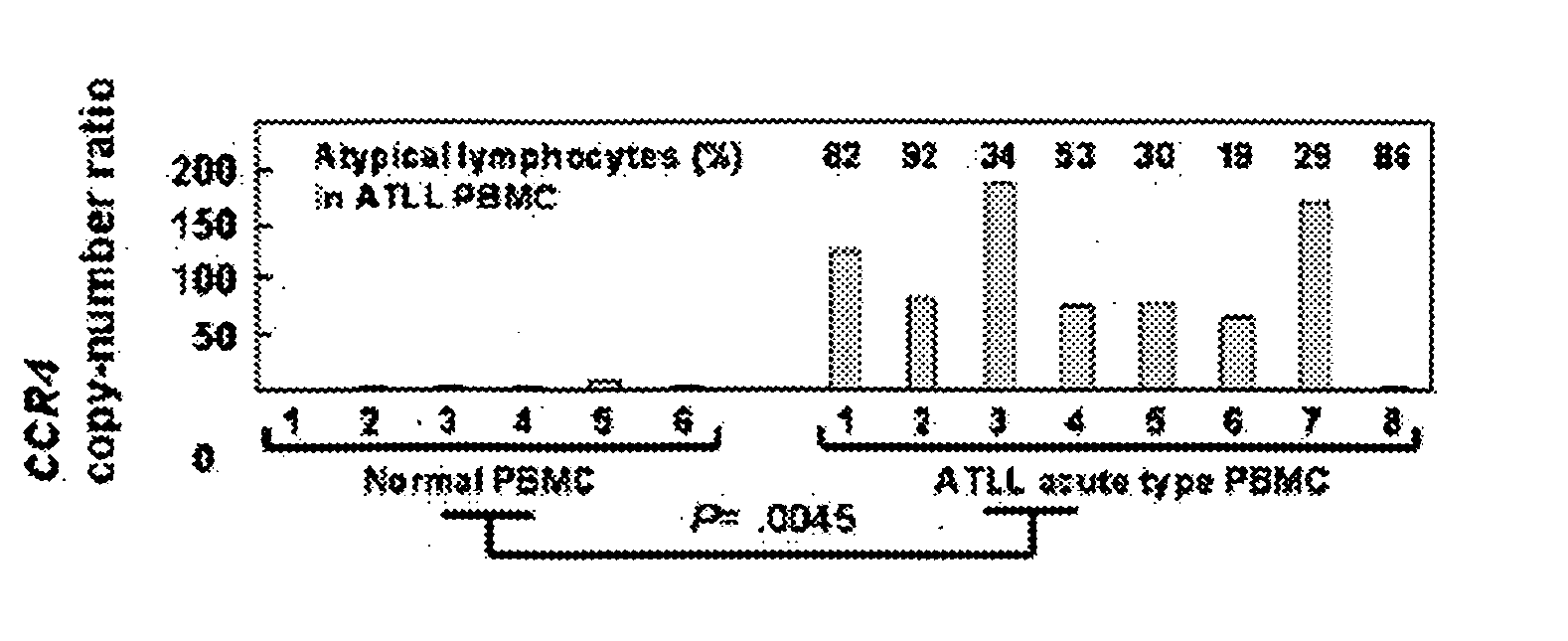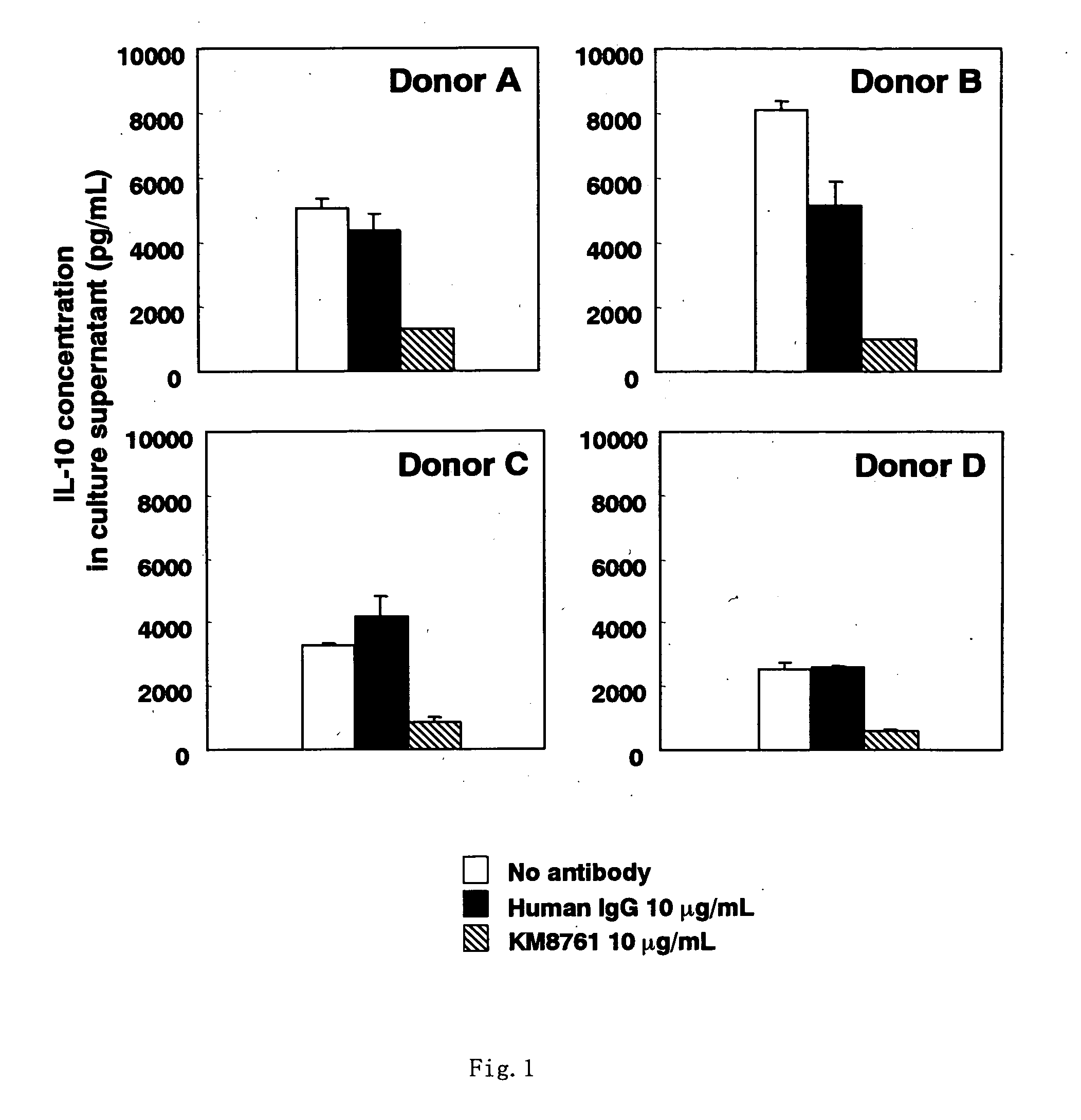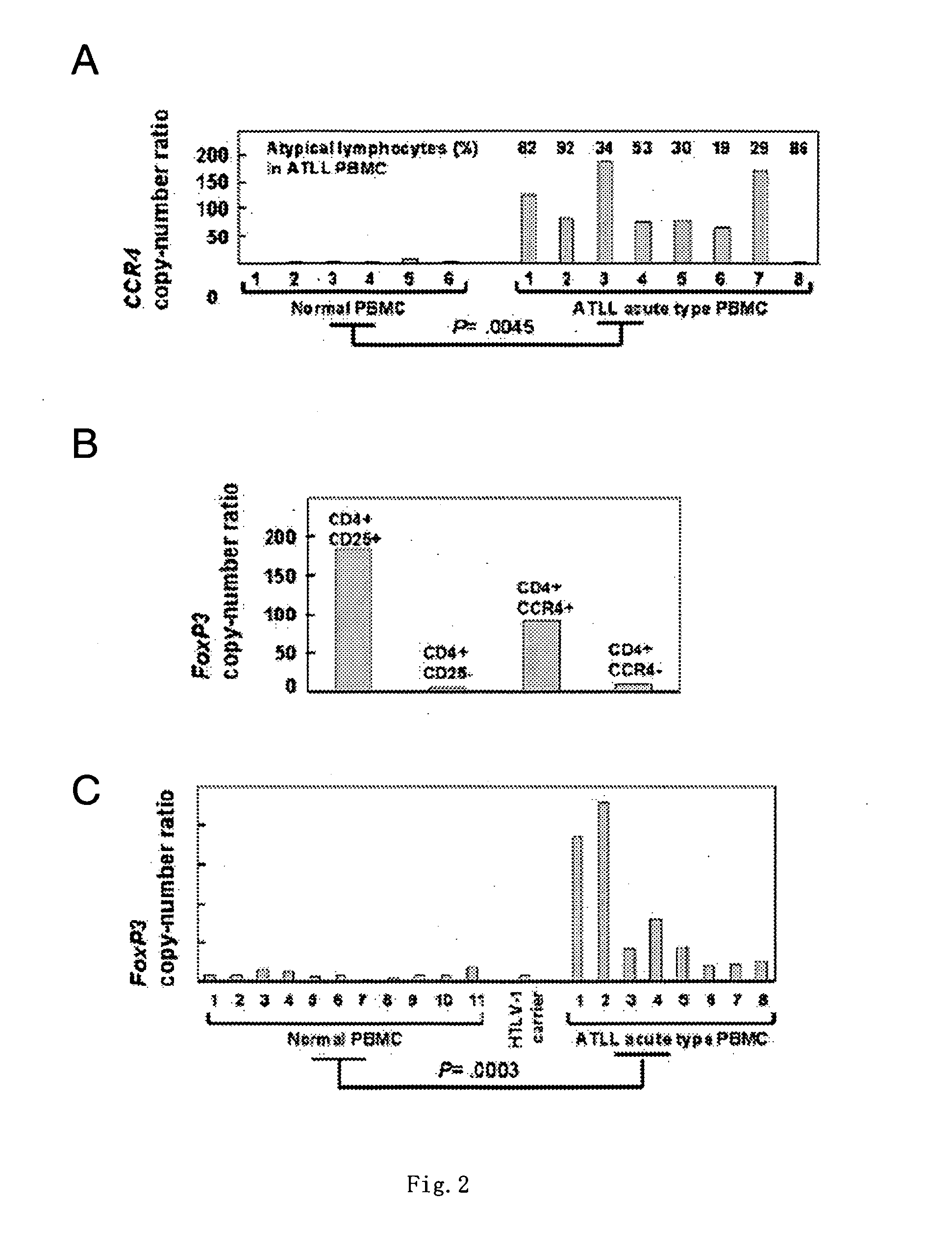Method of depleting regulatory T cell
a technology of regulatory t cells and t cells, which is applied in the field of depleting in vivo regulatory t cells, can solve the problems of deteriorating immunoenhancing effect and inability to specifically deplete regulatory t cells, and achieve the effect of excellent therapeutic methods and strong suppression of il-10 production
- Summary
- Abstract
- Description
- Claims
- Application Information
AI Technical Summary
Benefits of technology
Problems solved by technology
Method used
Image
Examples
example 1
Effect on the Suppression of IL-10 Production in Human Peripheral Monocyte (PBMC) by Using Anti-CCR4 Humanized Antibody KM8761
[0238] Using an injection syringe charged with 200 units (200 μL) of a sodium heparin injection fluid (manufactured by Takeda Pharmaceutical), peripheral blood was collected at 50 ml from each of 4 healthy persons randomly selected (donors A, B, C and D). After the blood was diluted 2-fold with saline (manufactured by Otsuka Pharmaceutical), 10 mL of each of the resulting diluted blood was gently overlaid on 4 mL of lymphoprep (manufactured by NYCOMED PHARMA AS) divided in a 15-mL centrifuge tube (manufactured by Sumitomo Bakelite), followed by centrifugation at 800×g and room temperature for 20 minutes. The separated monocyte fraction collected from each centrifuge tube was suspended in RPMI1640 culture medium (manufactured by Gibco BRL) supplemented with 10% fetal bovine serum (manufactured by JRH Bioscience). After centrifugation at 400×g and 4° C. for 1...
example 2
Analysis of FoxP3 Gene Expressed in CCR4-Positive Cancer Cell from Patients with Adult T Cell Leukemia / Lymphoma
[0239] PBMC was collected from 8 patients with acute adult T cell leukemia / lymphoma (ATLL) and 6 healthy adult volunteers according to the method described in Example 1. A total RNA was prepared according to a usual method. Furthermore, the ratio (copy number ratio) of the CCR4 gene transcription product to the β-actin gene transcription product (internal standard) was measured by quantitative RT-PCR. Consequently, amount of the CCR4 gene transcription product in the PBMC from the ATLL patients was significantly higher than that in the PBMC from the healthy persons (FIG. 2A). It has been known that CCR4 is highly expressed in the cancer cells of ATLL patients (Clinical Cancer Research, 9: 3625-34, 2003). Thus, the above results show that the ATLL cells in PBMC are CCR4-positive.
[0240] Then, CD4-positive / CD25-positive cells and CD4-positive / CD25-negative cells were isolat...
example 3
Depletion of Regulatory T Cell by Anti-CCR4 Chimeric Antibody
[0242] PBMC was prepared from the blood of 4 healthy volunteers by the method described in Example 1 and was then suspended in the RPMI 1640 culture medium supplemented with 10% thermally inactivated human serum (manufactured by Gibco BRL) to 10 v / v %, and an anti-CCR4 chimeric antibody KM2760 (EP 1270595) was added thereto to a final concentration of 0 (no addition) or 10 μg / mL. After static culturing in the presence of 5% CO2 at 37° C. for 6 hours, total RNA was collected to measure each of CCR4, FoxP3, and β actin transcription products by the method described in Example 2. Consequently, it is shown that KM2760 addition decreased amount of the CCR4 gene expression and amount of FoxP3 gene expression in any of the PBMC samples (FIG. 3). The results show that the anti-CCR4 antibody is useful as an agent for depleting CCR4-positive regulatory T cell in blood.
PUM
| Property | Measurement | Unit |
|---|---|---|
| pH | aaaaa | aaaaa |
| volume | aaaaa | aaaaa |
| concentration | aaaaa | aaaaa |
Abstract
Description
Claims
Application Information
 Login to View More
Login to View More - R&D
- Intellectual Property
- Life Sciences
- Materials
- Tech Scout
- Unparalleled Data Quality
- Higher Quality Content
- 60% Fewer Hallucinations
Browse by: Latest US Patents, China's latest patents, Technical Efficacy Thesaurus, Application Domain, Technology Topic, Popular Technical Reports.
© 2025 PatSnap. All rights reserved.Legal|Privacy policy|Modern Slavery Act Transparency Statement|Sitemap|About US| Contact US: help@patsnap.com



